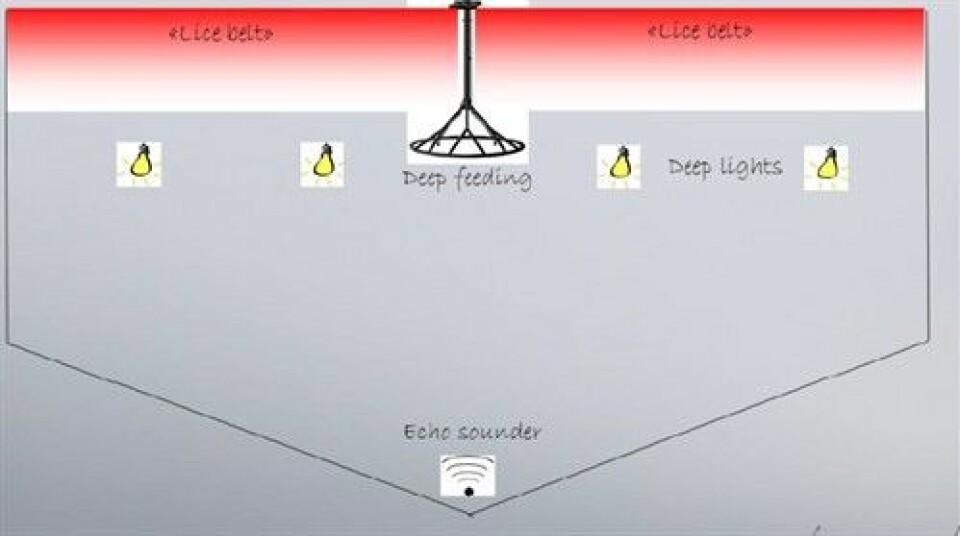
Salinity and temperature must be considered in fight against lice
The Institute of Marine Research in Norway has just published its final report on the FHF project “deep light and feeding”, which shows that feeding and lighting in the depth can be beneficial to avoid lice, but that salt content and temperature must also be taken into consideration.
Salmon lice are attracted to light and are therefore found in larger concentrations near the surface.
The idea in this project was to try to get the fish to swim deeper in the cage so that the meeting points between lice and salmon would be fewer, and thus give the salmon fewer lice, reports the fisheries and aquaculture industry research funding body (FHF).

Feeding at depth
This was attempted by feeding the fish at a depth of seven metres and having lighting at the depth to try to get the fish to stay further down the cage (see picture).
The experiment was carried out at two different sites, one in Trøndelag and one in Rogaland. In this study, there was no difference in the amount of lice between the groups fed at depth and had deep light and the control fish that did not have light (except for a shorter period to avoid maturation) and were not fed in depth. There were also no differences in fish welfare between the groups.
At one of the sites, the fish swam deeper than the control fish, while at the other site it did not.
It turned out that the preference salmon has for temperature overshadowed the effect of light and feeding in the depths. When there was a clear warmer temperature in the surface, the salmon stayed there rather than farther down.
Haloclines
In addition, haloclines (transitional layers between more saline and less saline water) emerged for larger periods during the experiment towards the deeper part of the cage, while at the same time there was brackish water in the surface. It is therefore conceivable that lice seek out the halocline rather than the surface. In this experiment it was shown that the swimming distance to the halocline had more to say for lice infestation than the swimming depth.
The project highlights that it is important to know the environmental conditions at the individual site in order to be able to optimise a strategy for reducing lice impact as best as possible.
This project was presented by Frode Oppedal, Institute of Marine Research, at the Lice Conference 2019. See the presentation here.






















































